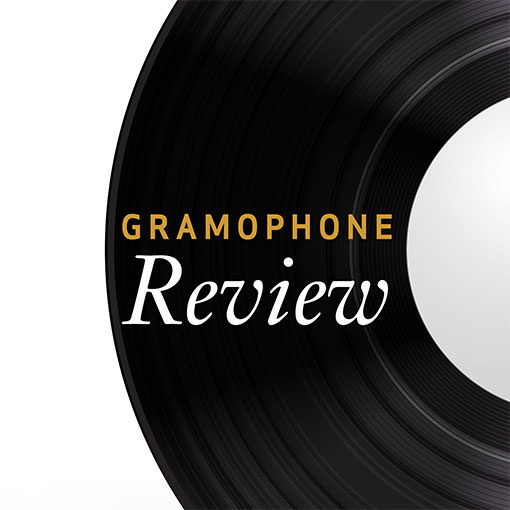Haydn Orchestral Works
View record and artist detailsRecord and Artist Details
Composer or Director: Joseph Haydn
Label: Delos
Magazine Review Date: 10/1992
Media Format: CD or Download
Media Runtime: 80
Mastering:
DDD
Catalogue Number: DE3063

Tracks:
| Composition | Artist Credit |
|---|---|
| Concerto for Cello and Orchestra No. 2 |
Joseph Haydn, Composer
Gerard Schwarz, Conductor János Starker, Cello Joseph Haydn, Composer Scottish Chamber Orchestra |
| Symphony No. 61 |
Joseph Haydn, Composer
Gerard Schwarz, Conductor Joseph Haydn, Composer Scottish Chamber Orchestra |
| Symphony No. 103, 'Drumroll' |
Joseph Haydn, Composer
Gerard Schwarz, Conductor Joseph Haydn, Composer Scottish Chamber Orchestra |
Author: Richard Wigmore
Like previous discs in the series, this latest of Delos's mixed Haydn concerts comes with encomiums for composer (a puff from Mozart, no less, emblazoned on the cover), series concept, conductor and orchestra. Whether the actual performances justify this Saatchi and Saatchi-style approach is another matter. The playing of the Scottish Chamber Orchestra, if at times less than immaculate in ensemble and intonation, is neat and agreeable. But Schwarz's readings of both symphonies here, for all their amiability, strike me as rather casual and freewheeling. In No. 61, one of the richest from Haydn's middle period, the first movement, shorn of its exposition repeat, trips along too blithely and uneventfully (though Schwarz is admittedly preferable to the mincing Dorati performance, one of the rare disappointments in his complete Decca cycle—available on eight four-disc sets), and the finale is short on rhythmic cunning and dynamic contrast. Nor does the beautiful Adagio have sufficient intensity of line and sense of harmonic direction to justify Schwarz's very slow tempo. With an absence of real competition in this particular symphony (nothing as yet from Hogwood or Goodman, for instance), my recommendation would be the sturdy, lucid performance by Guschlbauer and the Vienna Baroque Ensemble (Erato).
In the Drumroll, of course, the competition really is serious, with Bruggen (Philips), Davis (also Philips—part of a four-disc set) and Beecham (EMI—part of a two-disc set) leading the field. And in this company Schwarz can sound distinctly uncharismatic. His division of the violins left and right yields special dividends in the outer movements; but the opening Allegro con spirito (again, no exposition repeat!) is too comfortable, with tame sforzando accents, little distinction between forte and fortissimo and insufficient sense of the development's dialectical urgency. And the finale—con spirito with a vengeance—sometimes sounds garbled, rhythmically precarious. In contrast, the Minuet, stately of tempo and smooth of line, inclines to pomposity; and in the Trio momentum is further undermined by pervasive ritardandos.
In the D major Cello Concerto Janos Starker is a fluent and assured soloist, with a distinctively plangent upper register. But in both outer movements I longed for more animation, more eager phrasing and a stronger sense of direction—at nearly 16 minutes the discursive opening movement, with its (for Haydn) unusually slow harmonic rhythm, really does seem a long haul. And for all Starker's burnished eloquence in the Adagio the dynamics, as so often on this disc, tend to hover around the median level, with no truly soft playing. The recording, agreeably resonant, is string dominated, with underpowered brass and timpani in both symphonies. Decent performances, then, which you might be happy to encounter in the concert hall; but not ones that I should want to subject to the scrutiny of repeated listening.'
In the Drumroll, of course, the competition really is serious, with Bruggen (Philips), Davis (also Philips—part of a four-disc set) and Beecham (EMI—part of a two-disc set) leading the field. And in this company Schwarz can sound distinctly uncharismatic. His division of the violins left and right yields special dividends in the outer movements; but the opening Allegro con spirito (again, no exposition repeat!) is too comfortable, with tame sforzando accents, little distinction between forte and fortissimo and insufficient sense of the development's dialectical urgency. And the finale—con spirito with a vengeance—sometimes sounds garbled, rhythmically precarious. In contrast, the Minuet, stately of tempo and smooth of line, inclines to pomposity; and in the Trio momentum is further undermined by pervasive ritardandos.
In the D major Cello Concerto Janos Starker is a fluent and assured soloist, with a distinctively plangent upper register. But in both outer movements I longed for more animation, more eager phrasing and a stronger sense of direction—at nearly 16 minutes the discursive opening movement, with its (for Haydn) unusually slow harmonic rhythm, really does seem a long haul. And for all Starker's burnished eloquence in the Adagio the dynamics, as so often on this disc, tend to hover around the median level, with no truly soft playing. The recording, agreeably resonant, is string dominated, with underpowered brass and timpani in both symphonies. Decent performances, then, which you might be happy to encounter in the concert hall; but not ones that I should want to subject to the scrutiny of repeated listening.'
Discover the world's largest classical music catalogue with Presto Music.

Gramophone Digital Club
- Digital Edition
- Digital Archive
- Reviews Database
- Full website access
From £8.75 / month
Subscribe
Gramophone Full Club
- Print Edition
- Digital Edition
- Digital Archive
- Reviews Database
- Full website access
From £11.00 / month
Subscribe
If you are a library, university or other organisation that would be interested in an institutional subscription to Gramophone please click here for further information.





